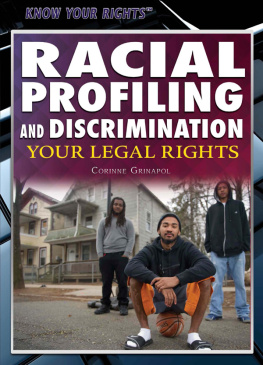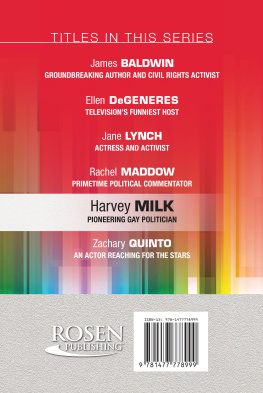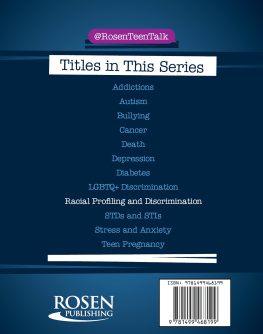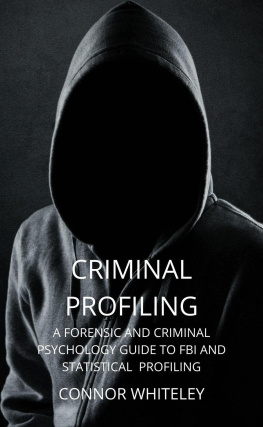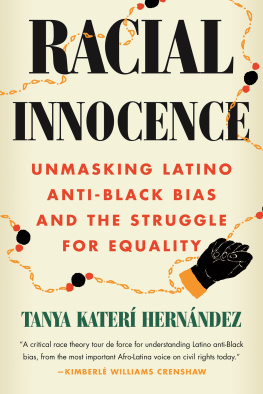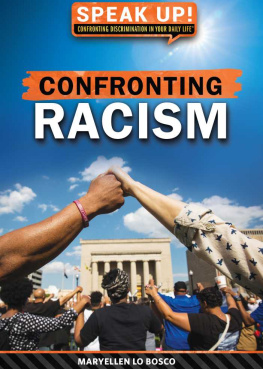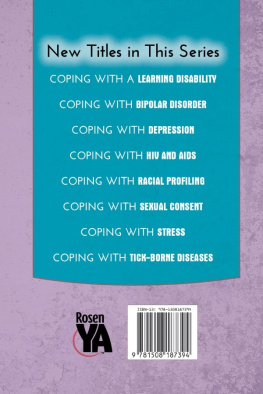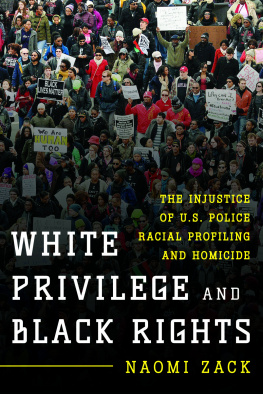Published in 2016 by The Rosen Publishing Group, Inc.
29 East 21st Street, New York, NY 10010
Copyright 2016 by The Rosen Publishing Group, Inc.
First Edition
All rights reserved. No part of this book may be reproduced in any form without permission in writing from the publisher, except by a reviewer.
Expert Reviewer: Lindsay A. Lewis, Esq.
Library of Congress Cataloging-in-Publication Data
Grinapol, Corinne, author.
Racial profiling and discrimination: your legal rights/Corinne Grinapol.
pages cm.(Know Your Rights)
Includes bibliographical references and index.
ISBN 978-1-4777-8020-6 (library bound)
ISBN 978-1-4777-8619-2 (pbk.)
ISBN 978-1-4777-8620-8 (6-pack)
1. Race discriminationLaw and legislationUnited States Juvenile literature. 2. MinoritiesLegal status, laws, etc United StatesJuvenile literature. 3. Narcotic lawsUnited StatesJuvenile literature. 4. Juvenile justice, Administration ofUnited StatesJuvenile literature. 5. Racial profiling in law enforcementUnited StatesJuvenile literature. I. Title.
KF4755.G75 2016
363.2308900973dc23
2014040242
Manufactured in the United States of America
INTRODUCTION
I n a video interview, Anthony, a high school student in Chicago, describes his first run-in with the police. He was leaving a party at 10:30 PM and stopped at a corner. A police car pulled up, and the police inside called him over. Anthony recalled the cops in the car saying, Get him! Get him. Anthony got scared and ran. Multiple cars and police with dogs chased him, catching up with Anthony at a gas station. The police tackled Anthony to the ground and handcuffed him. With Anthony sitting in the back of a police car, the officer checked his background to find he had a clean record.
When they discovered his record was clean, they brought him home. His dad asked the cops why his son had been handcuffed. They said it was a case of mistaken identityAnthony looked like a gang member they were on the lookout for.
The party Anthony had left when the cops stopped him? It was an eighth-grade graduation party. Anthony recalled another detail about the party. When he left the party, he had walked out with another kid, a boy who was white. Anthony was black. The two had walked out together, but Anthony was the only one who had been picked out by the police to be stopped. Since that day, Anthony has been on guard when he walks on the streets, afraid he will get stopped by cops for no reason other than walking while black.
Stories like Anthonys are far from rare. At every point in the system, from school suspension to sentencing and incarceration, minority youth are targeted for punishment at rates much higher than those for white youth.
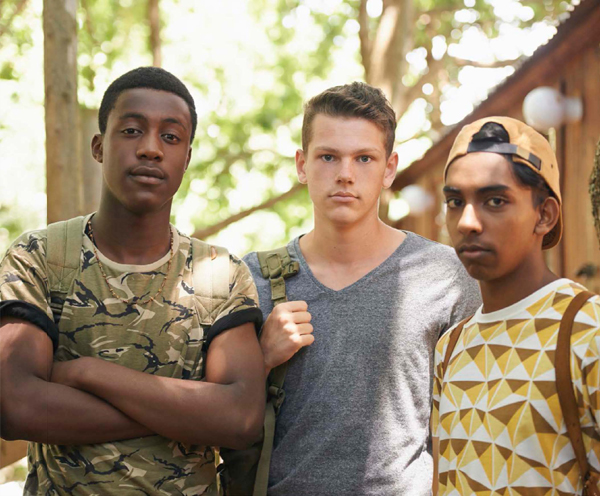
In many cities and towns across the United States, your racial and ethnic background could affect your interactions with the police.
This resource will help you understand the inequalities that exist in the criminal justice system and how those inequalities can affect your life. It will also help you to become aware of those rights that you have and will help you come up with strategies to avoid getting caught up in that system.
If you are already in trouble, if you are facing suspension or expulsion from school, if you find yourself in detention waiting to come up in front of a judge, dont lose hope. Know there are people and organizations out there that exist to help navigate the system, fight for freedom, and help defend your rights. This resource will help you figure out how to get those people to fight for you.
CHAPTER 1
THE SCHOOL-TO-PRISON PIPELINE
A lthough the best way to avoid jail is to stay in school, the popularity of certain new policies and trends has made this harder than you think. These rules not only make it harder for children to stay in school, but push kids straight out of school and into the criminal justice system. This phenomenon is known as the school-to-prison pipeline.
One policy making this possible is zero tolerance rules, where one mistake can lead to a suspensionno questions asked, no exceptions. This happened to Kiera Wilmot, a student at Bartow High School in Florida. She brought part of a science experiment with her to school for her teacher to approve: toilet bowl cleaner and aluminum foil mixed in a plastic bottle. She was planning to make a volcano and was told by a friend this would make the volcano explode. When her friends convinced Kiera to show them the experiment in the schoolyard, things went horribly wrong. Smoke poured out of the bottle, and there was a small explosion. An assistant principal saw what happened, and Kiera explained that she had no idea that would occur. In the schools opinion, it didnt matter that it was an accident, no one got hurt, and no property was damaged or that Kiera was a good student who had never been in trouble. The school saw Kieras bottle as an explosive. She was taken out of the school in handcuffs, and the assistant attorney decided to charge her as an adult on two felony counts, including possessing a weapon. Fortunately, the charges against Kiera were dropped. Kiera was expelled and sent to an alternative school, however, where she felt the material was a lot less challenging than what she was used to.

Since school shootings have been on the rise, schools have responded with zero tolerance policies that can even make innocent science experiments a cause for concern.
Many times students of color like Kiera are viewed as less innocent than white students. A cycle of profiling, arrests, and images in the news and media help keep this cycle going. Fortunately for Kiera, her story has a happy ending. A NASA astronaut who saw her story raised money for Kiera to continue to explore her love of science by sending Kiera and her sister to space camp.
Another change has made being arrested in school a frightening reality for a growing number of children. Although schools would traditionally hire private security guards to look over safety, a growing number of schools and districts are now hiring police officers. Just like on the streets, and unlike security guards, these officers have the power to arrest kids in school. Things that used to get you sent to the principals officegetting into a fight, yelling at your teachercan now get you in handcuffs.
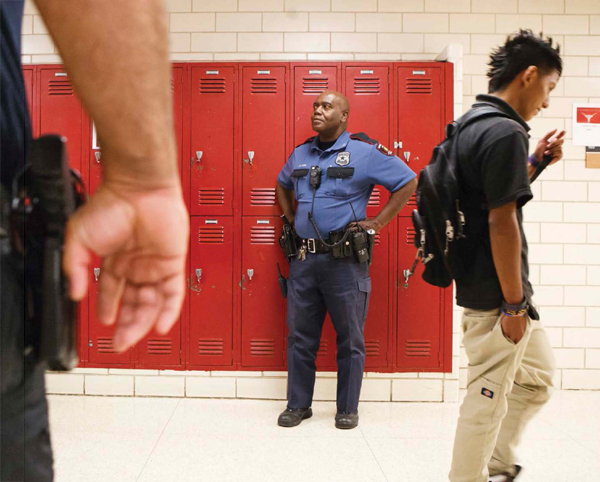
When police officers replace security guards in schools, the number of school-based arrests tends to rise, making this an area of concern for those trying to end the school-to-prison pipeline.
THE UGLY TRUTH OF ZERO TOLERANCE
According to the U.S. Department of Education, during the 20112012 school year, 36 percent of students across the country who were expelled were white. Thirty-four percent were black. The numbers seem even, but a little more than half the population of students is white, whereas just 16 percent is black. So the likelihood of a black student getting expelled is much higher than that of a white student. And it isnt just expulsion rates that are uneven. The differences start in preschool, where 48 percent of students who have been suspended more than once are black, compared to just 26 percent of white students.

